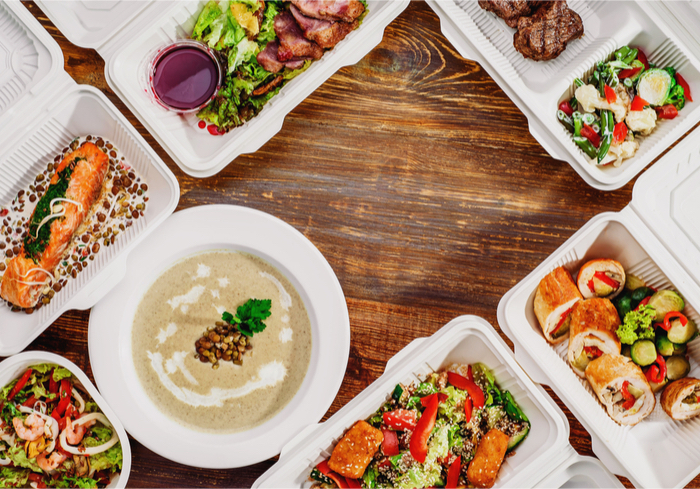
Established food delivery apps that serve customers from coast to coast aren’t the only game in town. In communities across the country, there are also smaller upstarts delivering food to homes and businesses. Take Holland Eats, which caters to 30,000 residents in Holland, Michigan. The company, which was started by two entrepreneurs who already run a food delivery service in Texas, is looking to differentiate itself by offering personalized service that relies on direct connections with diners and restaurants.
The app comes as the online food delivery market is booming. According to one estimate, its projected value is set to be in the tens of billions of dollars – $55 billion, to be exact – by 2022. (The annual value of the pizza delivery industry alone is $7 billion – that’s a lot of slices.) And consumers are trading a phone call for a tap of an app: As of 2017, 6.6 percent of all restaurant orders came from digital channels. For the first time, digital orders outpaced phone orders, which stood at 5 percent, showing that food delivery services are joining established players in what appears to be a growing market.
The service does, however, have the kinds of interfaces that consumers might see with national food delivery services. They will be able to download a mobile app or log on to the company’s website to place their orders and pay via credit card. After that, Holland Eats Co-Owner Christian Garcia said customers can receive their orders in about 30 to 60 minutes. They will be kept in the loop with notifications about the status of their orders.
“We try to make sure [you know] how fast your food is coming,” Garcia told PYMNTS in an interview. Once customers receive their orders, they will have the chance to share a picture of their meal with Holland Eats and receive credits to use toward the service. “The better the picture … the higher the discount will be,” Garcia said.
The Business Model
There are a few practical reasons that Garcia is seeking these images. For starters, he can use the pictures as marketing tools, putting them on his site to show other customers real-life examples of what a dish looks like when it is delivered. And the credit itself could help spur future business, encouraging customers to place another order. “It kind of gives people an incentive to come back,” he noted.
But he doesn’t want to provide a credit as a resolution for an incorrect order. If a restaurant on his platform makes a mistake, Garcia said offering a credit doesn’t really solve the problem, as the customer is still left with an order that may not meet their wants or needs. (“That ruins your whole night,” Garcia said of customer sentiment in such a situation). To remedy that problem, he plans to send another meal to immediately fix the problem and leave the customer feeling satisfied.
Garcia seeks to work with both local and corporate restaurants on his platform. In line with his philosophy of providing strong service, he tries to meet with the eateries that he will feature on his site and write bios about them. His site could help bring in more customers for these establishments. “A lot of people like to try out local options; they just don’t know they’re there,” Garcia pointed out.
Garcia is also bringing some untraditional food offerings to his platform. For example, a frozen yogurt shop that applied to join. Garcia is trying to work out the details, as frozen yogurt may not travel well, but that company also serves smoothies, so Holland Eats will likely deliver those. Garcia also plans to offer gift cards, which is beneficial as the consumer isn’t limited to using it at just one restaurant. His service has already received a lot of requests from towns around Holland. Going forward, Garcia wants to serve other communities in Western Michigan.